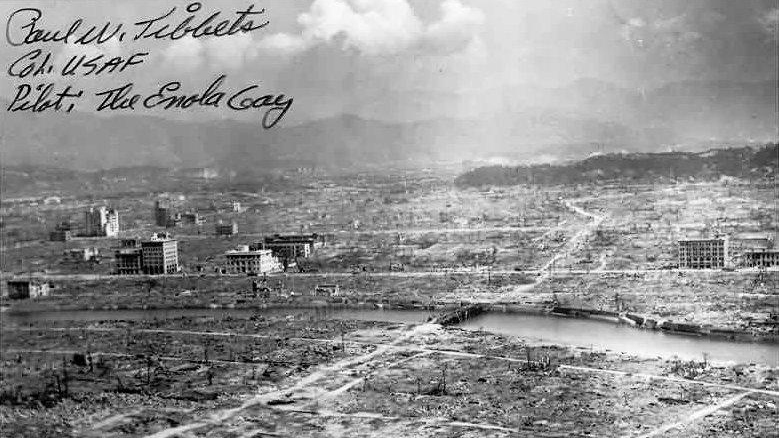Hiroshima and Nagasaki: 80 Years of Nuclear Reckoning
Yui Fujiki is a Project Ploughshares Research Assistant. Read her bio here.
1. Brief History of Bombing and its Human Consequences
At 8:15 a.m. on August 6, 1945, the US Boeing B-29 Superfortress known as the Enola Gay released a uranium-based bomb codenamed “Little Boy,” which detonated approximately 600 metres above Hiroshima, a Japanese city with a population of approximately 350,000. The first nuclear weapon had been dropped on human beings.
When Little Boy exploded, an intense flash of light and a searing heatwave engulfed Hiroshima. The explosion produced a massive shockwave and firestorm, reducing most of the city to ashes within seconds.
The fireball from the explosion rapidly expanded to a diameter of approximately 900 feet (274 metres), incinerating everything in its path. Within seconds, a towering mushroom cloud began to rise over the city. Temperatures at ground level soared to an unimaginable 7,000 degrees Fahrenheit (3,871 Celsius). Buildings were obliterated, fused into rubble by heat and pressure. Approximately 80,000 human lives were lost in an instant.
The Hiroshima Prefectural Industrial Promotion Hall, a government building constructed in 1915 to showcase and support local industry, commerce, and culture, is now preserved as the Hiroshima Peace Memorial (Genbaku Dome), a haunting reminder of the bomb’ s impact.
Three days later, at 3:47 a.m. on August 9, a US B-29 bomber departed from Tinian Island, initially bound for Kokura, a city known for its dense concentration of military factories and war-related infrastructure. When this target was obscured by heavy cloud cover, the crew diverted to their secondary objective — Nagasaki.
At 11:02 a.m., a plutonium-based bomb, known as “Fat Man,” was dropped over the Urakami valley in northern Nagasaki, exploding at an altitude of approximately 1,650 feet (503 metres). Possessing a destructive power of about 21 kilotons, roughly 40 percent greater than the uranium bomb that devastated Hiroshima, Fat Man unleashed immense devastation. Between 40,000 and 75,000 people were killed instantly.
Today, Hiroshima and Nagasaki stand as enduring global testaments to the catastrophic human cost of nuclear warfare.

